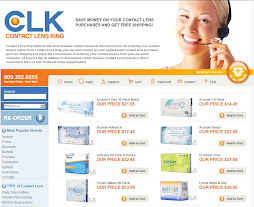 Ultraviolet rays are invisible light rays from the sun that carry more energy than visible light. This invisible radiation is also produced from tungsten lamps, welding arcs, and certain fluorescent lights. Ultraviolet radiation (UVR) can damage a person’s eyes and skin.
Ultraviolet rays are invisible light rays from the sun that carry more energy than visible light. This invisible radiation is also produced from tungsten lamps, welding arcs, and certain fluorescent lights. Ultraviolet radiation (UVR) can damage a person’s eyes and skin.Sunlight and UVR can reach the eye by direct viewing, scattering from the sky, or reflection from objects such as the ground. Direct sunlight is not a major ocular health concern because not many people stare directly into the sun. The eyebrow also helps shade the eye when a person is facing the sun. Reflected light is more crucial to eye health. Fresh snow reflects as much as 85 percent of UV rays. Other reflective surfaces such as sand and water can be dangerous; the reflected rays can reach the eye even when a hat is worn.
UV radiation is divided into three categories: UVA, UVB, or UVC. UVC rays are almost entirely absorbed by the Earth’s atmosphere. The cornea and the lens of the eye absorb UVB rays. These rays do not penetrate the retina in the back of the eye, but can alter the eye’s lens and cause cataracts if the eye is not adequately protected. UVA radiation has lower amounts of energy than UVB rays, but is capable of penetrating deeper into the eye and damaging the retina, which can lead to macular degeneration and blindness.
According to the World Health Organization, 80 percent of UVR exposure occurs by the time a person reaches 18. Children have larger pupils and tend to spend more time outdoors than adults, which can lead to as much as three times more UVR exposure annually.
According to research conducted at the University of New South Wales, ocular changes can begin in children as young as 9, and 80 percent of Australian children had signs of eye damage by the time they reached age 15. One Australian school district mandated sunglass use in elementary-aged students. However, 65 percent of elementary schools in the United States prohibit sunglasses.
The UV Index, developed by the National Weather Service, the Environmental Protection Agency, and the Centers for Disease Control, estimates the amount of UVR that will reach the Earth in a certain location. High-risk periods are between 10 a.m. and 4 p.m. and at noon UVR can be 10 times higher than three hours earlier or later.
The Earth’s ozone acts as a shield against UVR, which can cause sunburn, skin cancer, keratitis and cataracts. Over the next 10 to 20 years, scientists predict the ozone may be depleted by as much as 20 percent. Holes in the ozone layer have already been located at both poles. Research conducted at the University of Houston College of Optometry has found radiation levels are unhealthy 90 percent of the time during the summer in the southern United States.
Effects of UVR
The effects of UV exposure on eye health are cumulative and symptoms can be delayed for years, and in some cases decades, making it more difficult to promote the need for protection.
In addition to the increased risk of cataracts and macular degeneration, overexposure to UV rays can also lead to pterygium, an abnormal growth on the conjunctiva that can eventually spread onto the cornea and require surgery. Pterygium is the most prevalent UV-related disease of the conjunctiva. Researchers estimate that pterygium affects more than 10 percent of the population in the southern United States and around 20 percent of central Mexico’s population. Skin cancer around the eye and photokeratitis, a painful sunburn of the cornea, can also result from overexposure to harmful UV rays.
Protecting the eyes
One of the most critical components of protection is education. In a 2005 Brand Health Monitor Report, eight out of 10 eye care patients said they wanted to know more about the impact of UV radiation.
All lenses can be manufactured with UV protection, including prescription eyeglasses, safety and sport goggles, and contact lenses.
The optimal protection against UVR is the combination of sunglasses, a wide-brimmed hat and, for those who use vision correction, UV-blocking contact lenses. The average contact lens blocks 10 percent of UVA rays and 30 percent of UVB rays. Lenses which meet the standards of the American National Standards Institute block 99.8 percent of UVB rays and 70 percent of UVA.Discuss the risks associated with UVR with your eye care practitioner and find out if UV blocking contact lenses are appropriate for you. It is important to remember that ultraviolet radiation can damage the eyes. Children’s eyes are especially susceptible, so be sure to adequately protect them.





No comments:
Post a Comment